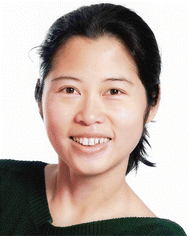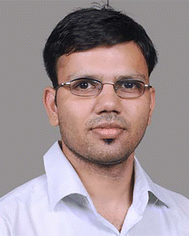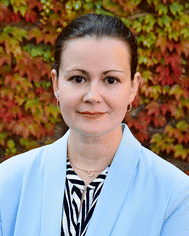Stability of optoelectronic materials and devices: a themed collection
Zhuoying
Chen
 a,
Dinesh
Kabra
a,
Dinesh
Kabra
 b and
Yana
Vaynzof
b and
Yana
Vaynzof
 *c
*c
aLPEM, ESPCI Paris, PSL Research University, Sorbonne Université, CNRS, 10 Rue Vauquelin, F-75005 Paris, France. E-mail: zhuoying.chen@espci.fr
bDepartment of Physics, Indian Institute of Technology Bombay, Powai, Mumbai-400076, India. E-mail: dkabra@iitb.ac.in
cChair for Emerging Electronic Technologies, Technische Universität Dresden (TUD) and the Leibniz Institute for Solid State and Materials Research Dresden (IFW), Dresden 01069, Germany. E-mail: yana.vaynzof@tu-dresden.de
Recent years have seen enormous strides made in the development of novel materials for optoelectronic devices. Particularly noteworthy examples are non-fullerene acceptors for organic photovoltaics,1 2D materials for photodetectors2 and metal halide perovskites for a broad range of devices, such as light-emitting diodes or solar cells.3 With remarkable advances in their synthesis, processing and integration into functional devices, the performances of these optoelectronic devices are reaching highly competitive levels in comparison to conventional technologies. This makes the future of such novel materials and their application in optoelectronics on an industrial scale more promising than ever. However, to realise their full potential on a commercial level, not only do the desired function and performance need to be achieved, but also their stability needs to be enhanced in order to reach the necessary lifetimes set by the different applications.
The study of material and device stability naturally takes a secondary role in the development of novel materials. Researchers focus on showcasing the desired performance first, in order to provide proof-of-concept devices that demonstrate the material’s potential for application. Nowadays, several classes of materials have already reached a certain level of maturity and the demonstration of superior performance is no longer the only goal of research. More and more attention is now diverted to understanding the fundamental processes that govern material and device degradation and the development of suitable mitigation strategies.4,5 The themed collection “Stability of Optoelectronic Materials and Devices” aims to highlight some of the best reports dedicated to the topic and motivate further research into this challenging and exciting field of materials chemistry.
From a chemical point of view, understanding how the molecular structure of a molecule impacts on its stability is highly important. This is highlighted in the excellent report by K. J. Thorley et al., who investigated a series of different derivatives of anthradithiophenes to identify the factors that influence their photostability (https://doi.org/10.1039/D2TC02922G). The authors demonstrate that substituents at certain molecular positions tend to increase photostability, with the optimal position depending on the type of substituent. Based on these insights the authors suggest a range of future design principles that can lead either to more stable materials for optoelectronics, or alternatively more reactive materials for application as sensors.
The processing of materials during device fabrication may also impact on the stability of the optoelectronic device. The work by C. Zhao et al. illustrates this by comparing standard spin-coating of a binary polymer blend to a sequential deposition of the same polymers during the fabrication of an organic solar cell (https://doi.org/10.1039/D2TC04142A). The researchers demonstrate that sequential processing not only results in improved photovoltaic performance, but also enhanced device stability. These improvements are associated with the differences in the vertical distribution of the two polymers achieved by the different processing methods.
An alternative approach to increasing device stability is through the engineering of its structure to introduce additional components that mitigate the deterioration of performance by suppressing the degradation pathway. This approach was adopted by S. Yoon et al. who introduced various CeO2−x nanostructures into an organic solar cell structure to act as free radical scavengers (https://doi.org/10.1039/D2TC04152A). The authors demonstrated that single-crystalline hollow CeO2−x nanorods were very effective as hydroxyl radical scavengers, resulting in an enhanced device stability of the solar cell upon continuous illumination.
These selected examples illustrate the broad range of research fields that are involved in the complicated task of improving the stability of optoelectronic materials and devices. These range from chemistry to materials science to device physics and engineering and include a plethora of challenging research questions. We hope that this themed collection inspires readers to extend their own research to include the study of material and device stability and the development of approaches for their enhancement.
References
- D. Luo, W. Jang, D. D. Babu, M. S. Kim, D. H. Wang and A. K. K. Kyaw, J. Mater. Chem. A, 2022, 10, 3255–3295 RSC.
- M. Malik, M. A. Iqbal, J. R. Choi and P. V. Pham, Front. Chem., 2022, 10, 905404 CrossRef CAS PubMed.
- L. Schmidt-Mende, V. Dyakonov, S. Olthof, F. Ünlü, K. M. T. Lê, S. Mathur, A. D. Karabanov, D. C. Lupascu, L. M. Herz, A. Hinderhofer, F. Schreiber, A. Chernikov, D. A. Egger, O. Shargaieva, C. Cocchi, E. Unger, M. Saliba, M. M. Byranvand, M. Kroll, F. Nehm, K. Leo, A. Redinger, J. Höcker, T. Kirchartz, J. Warby, E. Gutierrez-Partida, D. Neher, M. Stolterfoht, U. Würfel, M. Unmüssig, J. Herterich, C. Baretzky, J. Mohanraj, M. Thelakkat, C. Maheu, W. Jaegermann, T. Mayer, J. Rieger, T. Fauster, D. Niesner, F. Yang, S. Albrecht, T. Riedl, A. Fakharuddin, M. Vasilopoulou, Y. Vaynzof, D. Moia, J. Maier, M. Franckevičius, V. Gulbinas, R. A. Kerner, L. Zhao, B. P. Rand, N. Glück, T. Bein, F. Matteocci, L. A. Castriotta, A. Di Carlo, M. Scheffler and C. Draxl, APL Mater., 2021, 9, 109202 CrossRef CAS.
- Q. Burlingame, M. Ball and Y.-L. Loo, Nat. Energy, 2020, 5, 947–949 CrossRef.
- Z. Zhang, H. Wang, T. J. Jacobsson and J. Luo, Nat. Commun., 2022, 13, 7639 CrossRef CAS PubMed.
| This journal is © The Royal Society of Chemistry 2023 |



